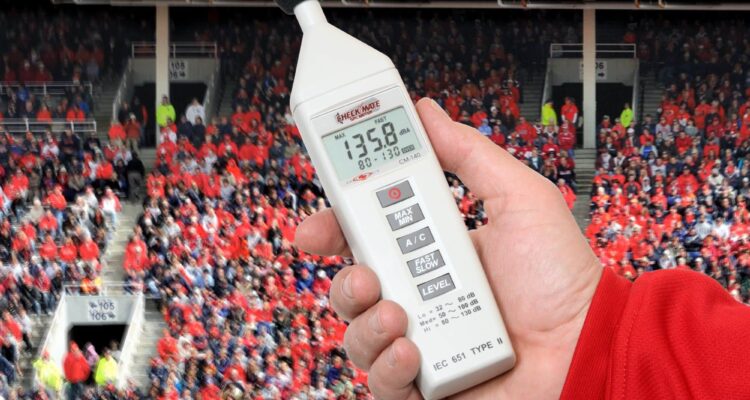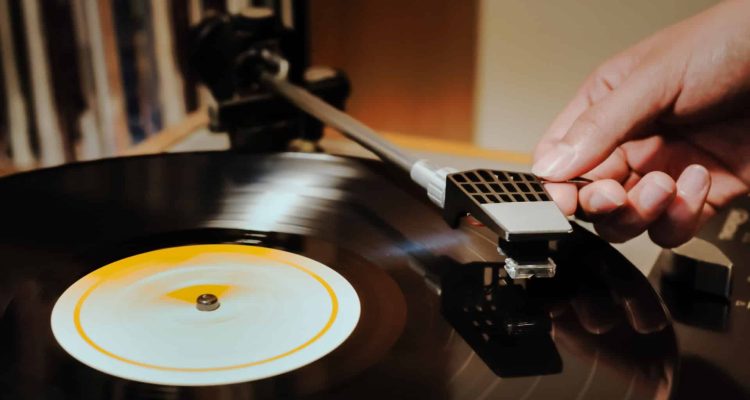

A sound level meter (sometimes referred to as a sound pressure level meter, decibel meter, or noise meter) is a tool that measures changes in air pressure. Sound level meters typically have four components: a microphone, a preamplifier, a signal processor, and a display.
The microphone converts the acoustical signal into an electrical signal. This electrical signal is very low in level, so the preamplifier strengthens it before the signal processor applies time and frequency weighting measures to determine the sound level. The display conveys the results to the user in decibels.
What Is Time Weighting?
Time weighting analyzes the way the sound level meter reacts to pressure changes. It’s the response time of the detector. The analyzer applies Slow, Fast, or Impulse time weighting (measurements required by accepted guidelines and standards).
Slow has a response time of 1 second. It is the most commonly used setting for most environmental noise, as it is more of an average, with short sounds having less of an impact on the displayed level. Fast has a response time of 0.125 seconds; it is used when there are quick fluctuations in the sound. Impulse has a response time of 0.035 seconds and is used for measuring for very short sounds, such as gunshots.
What Is Frequency Weighting?
Frequency weighting adjusts the sound level based on the different frequencies received by the meter. These adjustments are important because the human ear’s sensitivity to sound varies based on the sound’s frequency and level. Frequency weightings are divided into several different categories, including the following.
- A-Weighting — dBA will filter the sound signal so that it closely coincides with the human ear’s response at medium-range levels. At medium levels, the ear is most sensitive to frequencies between 500Hz and 6kHz. A-weighting is used in most workplace and environmental noise measurements and covers the audio range of 20 Hz to 20 kHz.
- C-Weighting — dBC includes the effect of low frequencies and is flat between 31.5Hz and 8kHz. C-weighting should be used when there is considerable low frequency content and for levels above 100 dB. C-weighting is typically used for entertainment noise measurements.
- Z-Weighting — dBZ measures the flat frequency response between 10 Hz and 20 kHz +- 1.5 dB.
What Is Frequency Analysis?
Digital or electronic filters can divide sound into bands or sections and reflect the sound that isn’t in a specified band. These bands generally have a bandwidth of either one-third of an octave or a full octave.
An octave is a series of eight notes that occupies the interval between two notes, one note having twice or half the frequency of vibration of the other. One-third of an octave covers the range where the highest frequency is 1.26 times the lowest frequency. A chart called a spectrogram depicts the results of frequency analysis.
Do You Need to Calibrate Your Sound Level Meter?
Sound level meters require calibration to measure sound correctly; time and environmental conditions can affect the device’s response and sensitivity. You should regularly calibrate your sound level meter so that it continues to produce accurate results. Every 1-2 years is recommended.
Why Do People Use Sound Level Meters?
Sound level meters are used in a variety of scenarios where it is critical to measure and monitor sound levels. Examples include the following.
- Concert Levels — Many venues now have SPL limits, this is especially true of outdoor venues.
- Community Noise — Noise pollution, including noise caused by traffic and construction work, can affect human health.
- Industrial Noise — According to the Occupational Safety and Health Administration (OSHA), it is dangerous for humans to be subjected to noise levels above 85 decibels for more than eight hours at a time.
Different Types of Sound Level Meters
There are two classes of sound level meters. Both classes rely on the guidelines of the American National Standards Institute (ANSI) to define the sound meter’s accuracy.
- Class 1 — Class 1 sound level meters have a closer tolerance +/- 1.1dB @1kHz and are used for very precise sound assessment.
- Class 2 — Class 2 sound level meters have a tolerance of +/- 1.4dB@ 1kHz They are used for live audio, commercial, and industrial applications.
How to Use a Sound Level Meter
The following instructions will teach you how to use a sound level meter correctly.
- Position the meter an adequate distance from any reflectors or obstacles
- Place meter’s microphone roughly four to five feet above the ground
- Position the microphone so that it’s facing the source of the sound
A variety of factors can affect the meter’s measurements. Keep the following conditions in mind when using the meter.
- Location
- Time of day
- Weather conditions (if outdoors)
- Number and duration of measurements
- Distance from sound source
If you’re looking for a reliable sound pressure level meter, check out Galaxy Audio’s high-quality options. We offer the CM-170 Checkmate logging Sound Pressure Level Meter, CM-140 Checkmate Sound Pressure Level Meter Type 2 devices, and the CM-130 Economical SPL Sound Pressure Level Meter.
Galaxy Audio has over 45 years of experience in the concert sound and audio industry. Contact us today with any questions, or browse our website to learn more about our products.






